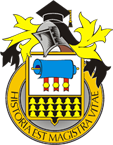Электронная библиотека
|
Название: Zur sozialen und kulturellen Identitat in fruheisenzeitlichen Gesellschaften
Год издания: 2014
Тип публикации: Публикации в зарубежных изданиях
|
| Библиографическое описание | Sharapova S. Zur sozialen und kulturellen Identitat in fruheisenzeitlichen Gesellschaften / Sharapova S., Kovrigin A., Korjakova L., Razev D., Daire M.-Y., Langouet L., Courtaud P. // Eurasia Antiqua. 2014. № 20. P. 273–298. |
|---|---|
| Аннотация | In the summer of 2000 the Zaural'skaja Lesostepnaja Archeologic˘eskaja Expedizija of the Institute of History and Archaeology of the Ural Division of the Russia Academy of Sciences (RAN) in cooperation with the National Center for Scientific Research in France (universities of Rennes 1 and Bordeaux 1) carried out excavations of kurgan burials in the surrounding of Lake Karas'e in the district of Tyumen. The work was conducted within the framework of the international project ‘‘Settlements and Cemeteries of the Early Iron Age at the Crossroads of Eurasia''. In addition to the presence of archaeological finds as such, there are also manifestations of social status and cultural identity, which can be observed through the prism of one of the burial complexes of the Sargat culture (-community): namely, in the cemetery of Karas'e 9. One kurgan (no. 11) in this cemetery was excavated. The rather flat mound was noticeably disturbed through the years-long agricultural activities; it still measured 32–35 m in diameter. A uniform enclosure ditch surrounded the burial place, in which two graves were located. The first grave (Grave 1) lay practically in the geometric centre of the kurgan and had already been completely looted. It still contained the skeletal remains of two individuals (burnt fragments of a skull, a jaw and several teeth). There was a noticeable difference in the age of the skeletons (one older than 30 years and the other 9 # 2 years), in the state of their preservation (the bones of the adult were burnt), and in the find contexts (some of the skeletal fragments were found underneath the mound). The remnants of the once rich grave inventory were found at different levels within the grave fill: beads made of blue glass, fragments of iron objects, some with traces of applied silver foil and gold ornaments, impressions of textiles and leather, and numerous pieces of gold thread. Furthermore, a hollow was discovered at the base of the grave, the sides of which displayed the colour of oxidised bronze – doubtlessly from the foot of a bronze cauldron that was stolen by the grave robbers. The remains of offerings of food were evidenced in the form of horse bones. |
| Ключевые слова |

